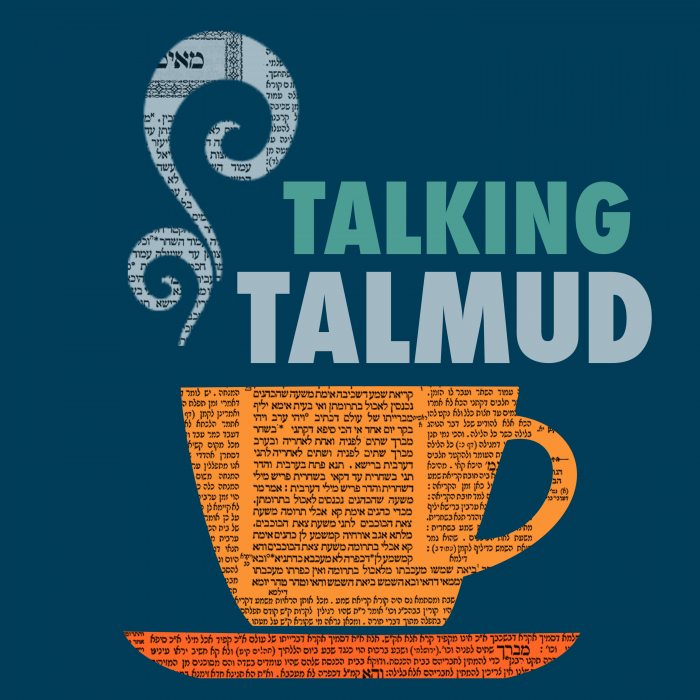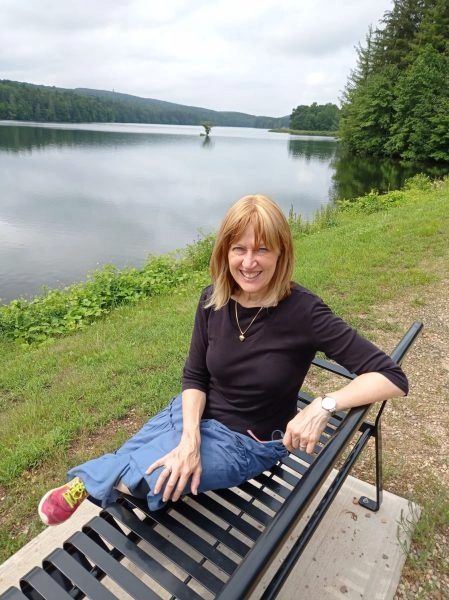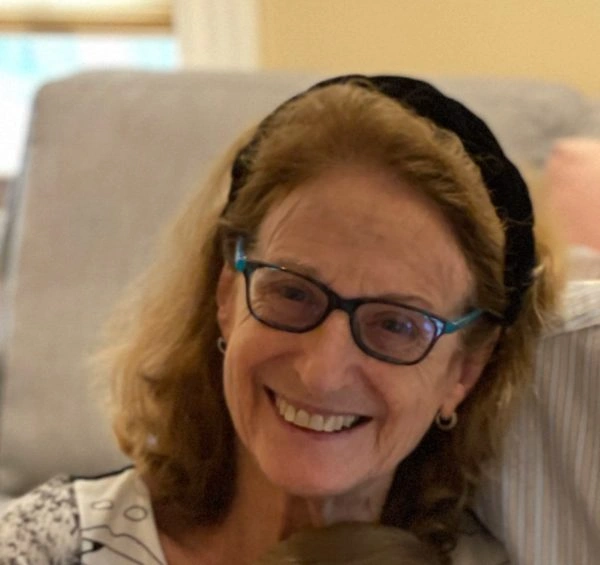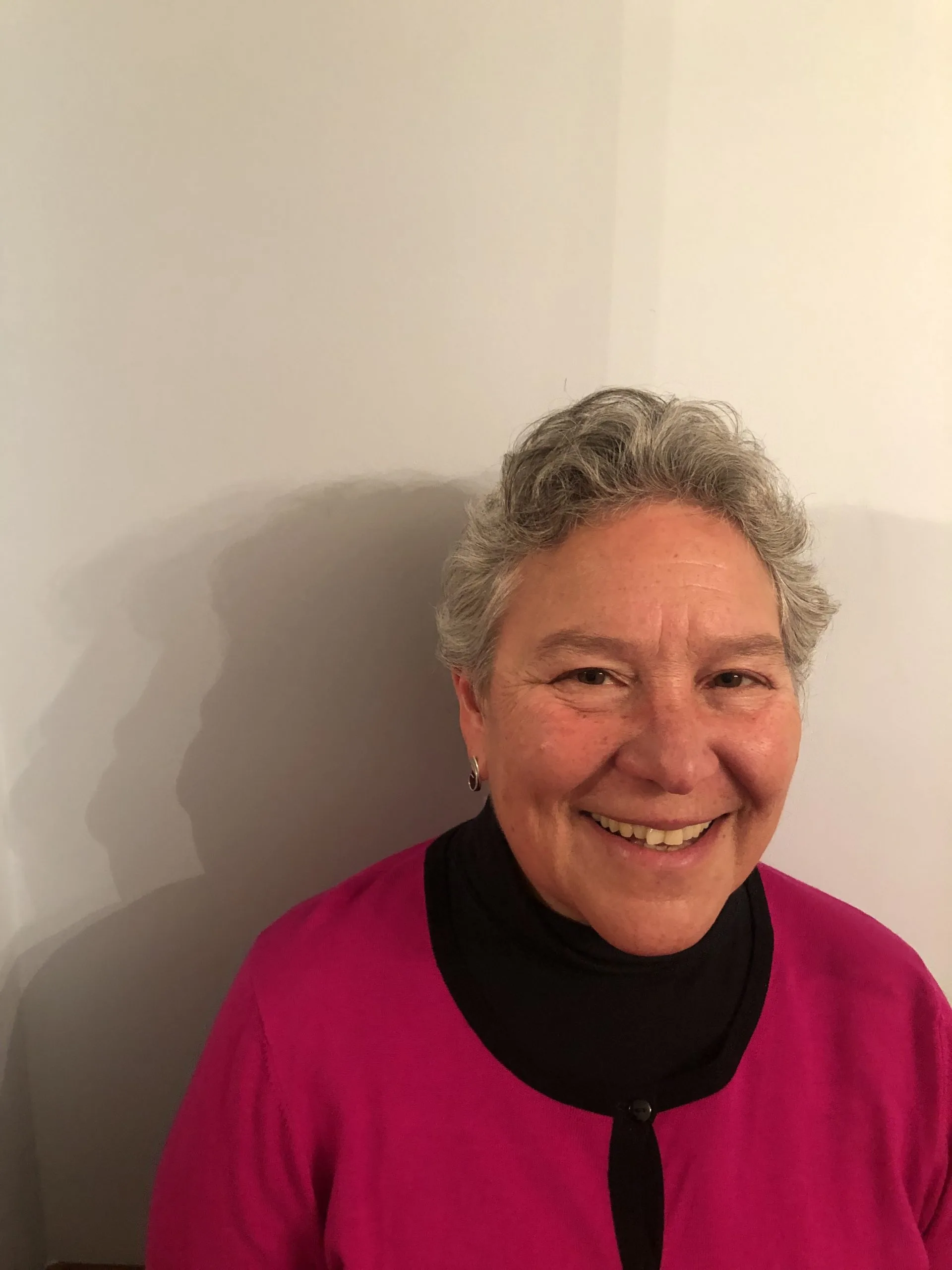Eruvin 4
שֶׁלֹּא יְהוּ מְכֻוּוֹנוֹת. בִּשְׁלָמָא לְרָבָא — כִּי הֵיכִי דְּלִיהֶוְיָין הַלָּלוּ שׂוֹחֲקוֹת וְהַלָּלוּ עֲצֵבוֹת. אֶלָּא לְאַבָּיֵי קַשְׁיָא!
that they are not precisely a cubit. Granted, according to Rava, the baraita means: So that these, the cubits of diverse kinds of seeds, should be measured with expansive handbreadths, and those, the cubits of sukka, should be measured with depressed handbreadths. However, according to Abaye, it is difficult.
אָמַר לָךְ אַבָּיֵי, אֵימָא: אַמַּת כִּלְאַיִם בְּאַמָּה בַּת שִׁשָּׁה.
The Gemara answers: Abaye could have said to you: Emend the baraita and say: The cubit of diverse kinds of seeds mentioned by the Sages is measured with a cubit of six handbreadths, not the other cubits.
וְהָא מִדְּקָתָנֵי סֵיפָא: רַבָּן שִׁמְעוֹן בֶּן גַּמְלִיאֵל אוֹמֵר: כׇּל אַמּוֹת שֶׁאָמְרוּ חֲכָמִים בְּכִלְאַיִם בְּאַמָּה בַּת שִׁשָּׁה, וּבִלְבַד שֶׁלֹּא יְהוּ מְצוּמְצָמוֹת, מִכְּלָל דְּתַנָּא קַמָּא כׇּל אַמּוֹת קָאָמַר!
The Gemara raises a difficulty. However, from the fact that it is taught in the latter clause of the baraita that Rabban Shimon ben Gamliel says: All the cubits that the Sages mentioned with regard to diverse kinds of seeds are measured with cubits of six handbreadths, provided that they are not measured with exact handbreadths? This proves by inference that the anonymous first tanna is speaking of all cubits, and not only those in the case of diverse kinds of seeds.
אָמַר לָךְ אַבָּיֵי: וְלָאו מִי אִיכָּא רַבָּן שִׁמְעוֹן בֶּן גַּמְלִיאֵל דְּקָאֵי כְּווֹתִי, אֲנָא דַּאֲמַרִי כְּרַבָּן שִׁמְעוֹן בֶּן גַּמְלִיאֵל.
The Gemara answers that Abaye could have said to you: Isn’t there Rabban Shimon ben Gamliel, who holds in accordance with my opinion? I stated my opinion in accordance with the opinion of Rabban Shimon ben Gamliel.
לְאַבָּיֵי וַדַּאי תַּנָּאֵי הִיא. לְרָבָא מִי לֵימָא תַּנָּאֵי הִיא?
The Gemara comments: According to Abaye, the issue of large and small cubits is certainly subject to a dispute between tanna’im, as his ruling can only be in accordance with the opinion of Rabban Shimon ben Gamliel. According to Rava, however, must it be said that this is subject to a dispute between tanna’im?
אָמַר לָךְ רָבָא: רַבָּן שִׁמְעוֹן בֶּן גַּמְלִיאֵל הָא אֲתָא לְאַשְׁמוֹעִינַן: אַמַּת כִּלְאַיִם לֹא יְצַמְצֵם.
The Gemara answers: This is not necessarily the case, as Rava could have said to you: Rabban Shimon ben Gamliel does not dispute the basic teaching of the anonymous first tanna that all the cubits mentioned by the Sages are cubits of six handbreadths. Rather, he came to teach us this: One should not reduce the cubit of diverse kinds of seeds, i.e., one should not measure it with depressed handbreadths.
וְלֵימָא: ״אַמַּת כִּלְאַיִם לֹא יְצַמְצֵם״, בְּאַמָּה בַּת שִׁשָּׁה לְמַעוֹטֵי מַאי? לָאו לְמַעוֹטֵי אַמַּת סוּכָּה וְאַמַּת מָבוֹי?
The Gemara raises an objection. And if that is the case, let him say: One must not reduce the cubit of diverse kinds of seeds. What does the phrase: A cubit consisting of six handbreadths come to exclude? Does it not come to exclude the cubit of a sukka and the cubit of an alleyway, which are measured with cubits of five handbreadths?
לָא, לְמַעוֹטֵי אַמָּה יְסוֹד וְאַמָּה סוֹבֵב,
The Gemara rejects this argument. No, Rabban Shimon ben Gamliel’s formulation comes to exclude the cubit of the base of the altar, which is the bottom level of the altar, one cubit high with a ledge one cubit wide, and the cubit of the surrounding ledge of the altar, which is five cubits above the base, six cubits above the ground, and one cubit wide. Everyone agrees that those cubits are small cubits of five handbreadths.
דִּכְתִיב: ״וְאֵלֶּה מִדּוֹת הַמִּזְבֵּחַ בָּאַמּוֹת אַמָּה אַמָּה וָטֹפַח וְחֵיק הָאַמָּה וְאַמָּה רֹחַב וּגְבוּלָהּ אֶל שְׂפָתָהּ סָבִיב זֶרֶת הָאֶחָד וְזֶה גַּב הַמִּזְבֵּחַ״. ״חֵיק הָאַמָּה״ — זֶה יְסוֹד, ״וְאַמָּה רֹחַב״ — זֶה סוֹבֵב, ״וּגְבוּלָהּ אֶל שְׂפָתָהּ סָבִיב״ — אֵלּוּ הַקְּרָנוֹת, ״וְזֶה גַּב הַמִּזְבֵּחַ״ — זֶה מִזְבַּח הַזָּהָב.
As it is written: “And these are the measures of the altar by cubits; the cubit is a cubit and a handbreadth, the bottom shall be a cubit, and the breadth a cubit, and its border by its edge round about shall be a span: And this shall be the higher part of the altar” (Ezekiel 43:13). And the Sages explained this verse as follows: “The bottom shall be a cubit,” this is the base of the altar; “and the breadth a cubit,” this is the surrounding ledge of the altar; “and its border by its edge round about,” these are the horns of the altar, i.e., extensions of the corners of the altar; “and this shall be the higher part of the altar,” this refers to the golden altar that stood inside the Sanctuary and was also measured by small cubits.
אָמַר רַבִּי חִיָּיא בַּר אָשֵׁי אָמַר רַב: שִׁיעוּרִין חֲצִיצִין וּמְחִיצִין, הֲלָכָה לְמֹשֶׁה מִסִּינַי.
Since the Gemara discussed measurements, it proceeds to cite that which Rabbi Ḥiyya bar Ashi said that Rav said: The measures relating to mitzvot in the Torah, and the halakhot governing interpositions that invalidate ritual immersions, and the halakhot of partitions are all halakhot transmitted to Moses from Sinai. These halakhot have no basis in the Written Torah, but according to tradition they were orally transmitted by God to Moses together with the Written Torah.
שִׁיעוּרִין?! דְּאוֹרָיְיתָא הוּא! דִּכְתִיב: ״אֶרֶץ חִטָּה וּשְׂעוֹרָה וְגוֹ׳״, וְאָמַר רַב חָנָן: כׇּל הַפָּסוּק הַזֶּה לְשִׁיעוּרִין נֶאֱמַר —
The Gemara questions this assertion: Are measures a halakha transmitted to Moses from Sinai? They are written in the Torah, as it is written: “A land of wheat, and barley, and vines, and figs, and pomegranates, a land of olive oil and honey” (Deuteronomy 8:8), and Rav Ḥanan said: This entire verse was stated for the purpose of teaching measures with regard to different halakhot in the Torah.
״חִטָּה״, לִכְדִתְנַן: הַנִּכְנָס לַבַּיִת הַמְנוּגָּע וְכֵלָיו עַל כְּתֵיפָיו, וְסַנְדָּלָיו וְטַבְּעוֹתָיו בְּיָדָיו — הוּא וְהֵם טְמֵאִין מִיָּד. הָיָה לָבוּשׁ כֵּלָיו, וְסַנְדָּלָיו בְּרַגְלָיו, וְטַבְּעוֹתָיו בְּאֶצְבְּעוֹתָיו הוּא טָמֵא מִיָּד, וְהֵן טְהוֹרִין עַד שֶׁיִּשְׁהֶא בִּכְדֵי אֲכִילַת פְּרָס — פַּת חִיטִּין וְלֹא פַּת שְׂעוֹרִין, מֵיסֵב וְאוֹכֵל בְּלִיפְתָּן.
Wheat was mentioned as the basis for calculating the time required for one to become ritually impure when entering a house afflicted with leprosy, as that which we learned in a mishna: One who enters a house afflicted with leprosy of the house (see Leviticus 14), and his clothes are draped over his shoulders, and his sandals and his rings are in his hands, both he and they, the clothes, sandals, and rings, immediately become ritually impure. However, if he was dressed in his clothes, and his sandals were on his feet, and his rings were on his fingers, he immediately becomes ritually impure, but they, the clothes, sandals, and rings, remain pure until he stays in the house long enough to eat half a loaf of bread. This calculation is based on wheat bread, which takes less time to eat, and not on barley bread, and it relates to one who is reclining and eating it together with relish, which hastens the eating. This is a Torah measurement connected specifically to wheat.
״שְׂעוֹרָה״, דִּתְנַן: עֶצֶם כִּשְׂעוֹרָה מְטַמֵּא בְּמַגָּע וּבְמַשָּׂא, וְאֵינוֹ מְטַמֵּא בְּאֹהֶל.
Barley is also used as a basis for measurements, as we learned in a mishna: A bone from a corpse the size of a grain of barley imparts ritual impurity through contact and by being carried, but it does not impart impurity by means of a tent, i.e., if the bone was inside a house, it does not render all the articles in the house ritually impure.
״גֶּפֶן״: כְּדֵי רְבִיעִית יַיִן לְנָזִיר.
The halakhic measure determined by a vine is the quantity of a quarter-log of wine for a nazirite. A nazirite, who is prohibited to drink wine, is liable to be flogged if he drinks that measure.
״תְּאֵנָה״: כִּגְרוֹגֶרֶת לְהוֹצָאַת שַׁבָּת.
Fig alludes to the measure of a dried fig-bulk with regard to the halakhot of carrying out on Shabbat. One is liable for carrying food fit for human consumption on Shabbat, provided that he carries a dried fig-bulk of that food.
״רִמּוֹן״, כְּדִתְנַן: כׇּל כְּלֵי בַּעֲלֵי בָתִּים שִׁיעוּרָן כְּרִימּוֹנִים.
Pomegranate teaches the measure, as that which we learned in a mishna: All ritually impure wooden vessels belonging to ordinary homeowners become pure through being broken, as broken vessels cannot contract or maintain ritual impurity, and they are considered broken if they have holes the size of pomegranates.
״אֶרֶץ זֵית שֶׁמֶן (וּדְבָשׁ)״: אֶרֶץ שֶׁכׇּל שִׁיעוּרֶיהָ כְּזֵיתִים. כׇּל שִׁיעוּרֶיהָ סָלְקָא דַּעְתָּךְ?! וְהָאִיכָּא הָנֵי דַּאֲמַרַן! אֶלָּא אֵימָא: אֶרֶץ שֶׁרוֹב שִׁיעוּרֶיהָ כְּזֵיתִים.
The Sages interpreted: A land of olive oil and honey, as: A land, all of whose measures are olive-bulks. The Gemara poses a question: Does it enter your mind that it is a land all of whose measures are olives-bulks? Yet aren’t there those measures that we just mentioned above, which are not olive-bulks? Rather, say: A land, most of whose measures are olive-bulks, as most measures, e.g., those relating to forbidden foods and to impurity imparted by a corpse in a tent and by contact with an animal carcass, are olive-bulks.
״דְּבַשׁ״, כְּכוֹתֶבֶת הַגַּסָּה לְיוֹם הַכִּיפּוּרִים.
Honey, i.e., dates from which date honey is extracted, also determines a measure, as with regard to eating on Yom Kippur, one is liable only if he eats a large date-bulk of food. Clearly, the measurements pertaining to mitzvot are explicitly written in the Torah and were not transmitted to Moses from Sinai.
וְתִיסְבְּרָא שִׁיעוּרִין מִיכְתָּב כְּתִיבִי? אֶלָּא הִלְכְתָא נִינְהוּ, וְאַסְמְכִינְהוּ רַבָּנַן אַקְּרָאֵי.
The Gemara refutes this argument: And can you hold that all these measures are explicitly written in the Torah with regard to each of the halakhot mentioned above? Rather, they are halakhot that were transmitted to Moses from Sinai, and the Sages based them on verses in the Torah.
חֲצִיצִין, דְּאוֹרָיְיתָא נִינְהוּ! דִּכְתִיב: ״וְרָחַץ אֶת כָּל בְּשָׂרוֹ (בַּמַּיִם)״, שֶׁלֹּא יְהֵא דָּבָר חוֹצֵץ בֵּין בְּשָׂרוֹ לַמַּיִם. ״בַּמַּיִם״ — בְּמֵי מִקְוֶה. ״כׇּל בְּשָׂרוֹ״ — מַיִם שֶׁכׇּל גּוּפוֹ עוֹלֶה בָּהֶן, וְכַמָּה הֵן — אַמָּה עַל אַמָּה בְּרוּם שָׁלֹשׁ אַמּוֹת. וְשִׁיעֲרוּ חֲכָמִים מֵי מִקְוֶה אַרְבָּעִים סְאָה.
Rabbi Ḥiyya bar Ashi said above that Rav said that the laws governing interpositions that invalidate ritual immersion are halakhot transmitted to Moses from Sinai. The Gemara challenges this assertion: These, too, are written in the Torah, as it is written: “And he shall bathe all his flesh in the water” (Leviticus 15:16), and the Sages derived that nothing should intervene between his flesh and the water. The definite article in the phrase “in the water” indicates that this bathing is performed in water mentioned elsewhere, i.e., specifically in the water of a ritual bath, and not in just any water. And the phrase “all his flesh” indicates that it must be in water into which all of his body can enter, i.e., in which a person can immerse his entire body at once. And how much water is that? It is a cubit by a cubit by the height of three cubits. And the Sages calculated the volume of a ritual bath of this size and determined that the waters of a ritual bath measure forty se’a. As this is derived from the Written Torah, what need is there for a halakha transmitted to Moses from Sinai?
כִּי אִיצְטְרִיךְ הִילְכְתָא, לִשְׂעָרוֹ. וְכִדְרַבָּה בַּר רַב הוּנָא, דְּאָמַר רַבָּה בַּר רַב הוּנָא: נִימָא אַחַת קְשׁוּרָה חוֹצֶצֶת, שָׁלֹשׁ אֵינָן חוֹצְצוֹת, שְׁתַּיִם אֵינִי יוֹדֵעַ.
The Gemara answers: The halakha transmitted to Moses from Sinai is needed with regard to his hair, that it too must be accessible to the water without interposition. And this is in accordance with the opinion of Rabba bar Rav Huna, as Rabba bar Rav Huna said: A single hair tied in a knot constitutes an interposition and invalidates the immersion. Three hairs tied together in a knot do not constitute an interposition, because three hairs cannot be tied so tightly that water cannot penetrate them. With regard to two hairs tied together in a knot, I do not know the halakha. This halakha with regard to hair is a halakha transmitted to Moses from Sinai.
שְׂעָרוֹ נָמֵי דְּאוֹרָיְיתָא הוּא, דְּתַנְיָא: ״וְרָחַץ אֶת כָּל בְּשָׂרוֹ״ — אֶת הַטָּפֵל לִבְשָׂרוֹ, וְזֶהוּ שֵׂעָר!
The Gemara raises a difficulty: The halakha with regard to his hair is also written in the Torah, as it was taught in a baraita: And he shall bathe all [et kol] his flesh. The superfluous word et comes to amplify and include that which is subordinate to his flesh, and that is hair.
כִּי אֲתַאי הִילְכְתָא לְרוּבּוֹ וּלְמִיעוּטוֹ וּלְמַקְפִּיד וּלְשֶׁאֵין מַקְפִּיד, וְכִדְרַבִּי יִצְחָק.
The Gemara answers: The halakha transmitted to Moses from Sinai comes to teach the details of interpositions on the body with regard to its majority and its minority, and with regard to one who is particular and one who is not particular, in accordance with the opinion of Rabbi Yitzḥak.
דְּאָמַר רַבִּי יִצְחָק: דְּבַר תּוֹרָה רוּבּוֹ וּמַקְפִּיד עָלָיו חוֹצֵץ, וְשֶׁאֵינוֹ מַקְפִּיד עָלָיו אֵינוֹ חוֹצֵץ. וְגָזְרוּ עַל רוּבּוֹ שֶׁאֵינוֹ מַקְפִּיד מִשּׁוּם רוּבּוֹ הַמַּקְפִּיד, וְעַל מִיעוּטוֹ הַמַּקְפִּיד מִשּׁוּם רוּבּוֹ הַמַּקְפִּיד.
As Rabbi Yitzḥak said: By Torah law, if there is an interposition between a person and the water, and it covers the majority of his body, and he is particular and wants the interposing substance removed, only then is it considered an interposition that invalidates immersion in a ritual bath. However, if he is not particular about that substance, it is not considered an interposition. The Sages, however, issued a decree prohibiting substances covering the majority of one’s body with regard to which he is not particular, due to substances covering the majority of one’s body with regard to which he is particular. And, they issued a decree prohibiting substances covering the minority of his body with regard to which one is particular, due to substances covering the majority of his body with regard to which one is particular.
וְלִיגְזוֹר נָמֵי עַל מִיעוּטוֹ שֶׁאֵינוֹ מַקְפִּיד מִשּׁוּם מִיעוּטוֹ הַמַּקְפִּיד, אִי נָמֵי מִשּׁוּם רוּבּוֹ שֶׁאֵינוֹ מַקְפִּיד!
The Gemara raises a question: Then let us also issue a decree deeming substances covering the minority of one’s body with regard to which he is not particular an interposition due to substances covering the minority of his body with regard to which one is particular, or alternatively, due to substances covering the majority of his body with regard to which he is not particular.
הִיא גּוּפַהּ גְּזֵירָה, וַאֲנַן נֵיקוּם וְנִיגְזוֹר גְּזֵירָה לִגְזֵירָה?!
The Gemara answers: We do not issue that decree, because the halakha that deems both an interposition covering the minority of his body about which one is particular and an interposition covering the majority of his body about which one is not particular an interposition is itself a decree. Shall we then rise up and issue one decree to prevent violation of another decree? In any case, these details with regard to interpositions are neither written nor alluded to in the Torah; rather, they are halakhot transmitted to Moses from Sinai.
מְחִיצּוֹת, דְּאוֹרָיְיתָא נִינְהוּ!
Rabbi Ḥiyya bar Ashi said that Rav said that the halakhot of partitions were transmitted to Moses from Sinai. The Gemara challenges this assertion as well: They are written in the Torah, as the fundamental principle that a partition ten handbreadths high establishes a separate domain is derived from the Torah.
דְּאָמַר מָר: אָרוֹן תִּשְׁעָה וְכַפּוֹרֶת טֶפַח, הֲרֵי כָּאן עֲשָׂרָה.
As the Master said: The Holy Ark in the Tabernacle was nine handbreadths high, as the verse states that its height was a cubit and a half. A cubit contains six handbreadths, so its height totaled nine handbreadths. And the cover atop the Ark was one handbreadth, which total ten. There is a tradition that the Divine Presence does not descend into the domain of this world, which is derived from the verse that states that the Divine Presence would reveal itself from above the cover of the Ark. Apparently, a partition of ten handbreadths creates a separate domain.
לָא צְרִיכָא, לְרַבִּי יְהוּדָה דְּאָמַר: אַמַּת בִּנְיָן בְּאַמָּה בַּת שִׁשָּׁה. אַמַּת כֵּלִים בְּאַמָּה בַּת חֲמִשָּׁה.
The Gemara answers: The halakha transmitted to Moses from Sinai is necessary only according to the opinion of Rabbi Yehuda, who said: The cubit mentioned with regard to the building of the Tabernacle and the Temple was a large cubit of six handbreadths, whereas the cubit mentioned with regard to the sacred vessels was a cubit of five handbreadths. According to this opinion, the Ark, which was a cubit and a half, and its cover, which was a handbreadth, measured eight and a half handbreadths. Therefore, nothing can be derived with regard to a partition of ten handbreadths.
וּלְרַבִּי מֵאִיר דְּאָמַר: כׇּל הָאַמּוֹת הָיוּ בְּבֵינוֹנִית, מַאי אִיכָּא לְמֵימַר?
The Gemara poses a question. And according to the opinion of Rabbi Meir, who said: All the cubits were medium ones, regular cubits of six handbreadths; what can be said? Apparently, according to his opinion, the laws governing partitions are explicitly stated in the Torah.
לְרַבִּי מֵאִיר, כִּי אֲתַאי הִילְכְתָא — לְגוּד וּלְלָבוּד וּלְדוֹפֶן עֲקוּמָּה.
The Gemara answers: According to the opinion of Rabbi Meir, the halakha with regard to a partition of ten handbreadths is indeed written in the Torah. However, the halakha transmitted to Moses from Sinai comes to teach other halakhot concerning partitions, e.g., the halakhot of extending [gode], according to which an existing partition is extended upward or downward to complete the requisite measure; and the halakhot of joining [lavud], according to which two solid surfaces are joined if they are separated by a gap of less than three handbreadths; and the halakhot of the curved wall of a sukka. A sukka is valid even if there are up to four cubits of invalid roofing, provided that this roofing is adjacent to one of the walls of the sukka. In that case, the invalid roofing is considered a bent extension of the wall. These concepts are certainly not written in the Torah.
הָיָה גָּבוֹהַּ מֵעֶשְׂרִים אַמָּה וּבָא לְמַעֲטוֹ, כַּמָּה מְמַעֵט? כַּמָּה מְמַעֵט?! כַּמָּה דִּצְרִיךְ לֵיהּ!
The Gemara returns to the laws of alleyways: If the cross beam spanning the entrance to an alleyway was higher than twenty cubits from the ground and one comes to diminish its height, how much must he diminish it? The Gemara is surprised by the question: How much must he diminish it? The amount that he needs in order to render its height less than twenty cubits.
אֶלָּא: רׇחְבּוֹ בְּכַמָּה? רַב יוֹסֵף אָמַר: טֶפַח, אַבָּיֵי אָמַר: אַרְבָּעָה.
Rather, the space between the cross beam and the ground must, of course, be reduced to twenty cubits. However, when one raises the alleyway, how much must the width of the raised section be in order to render the alleyway fit for carrying within it? Rav Yosef said: One handbreadth. Abaye said: Four handbreadths.
לֵימָא בְּהָא קָא מִיפַּלְגִי דְּמַאן דְּאָמַר טֶפַח, קָסָבַר: מוּתָּר לְהִשְׁתַּמֵּשׁ תַּחַת הַקּוֹרָה,
The Gemara suggests: Let us say that these amora’im disagree about this: The one who said one handbreadth holds that one is permitted to utilize the area beneath the cross beam spanning the entrance to the alleyway, as he maintains that the cross beam serves as a partition, and the alleyway is considered as if it were sealed by a partition descending from the outer edge of the cross beam that faces the public domain. Since the area beneath the cross beam is part of the alleyway and is less than twenty cubits, there is a conspicuous demarcation for one standing in the alleyway.






















